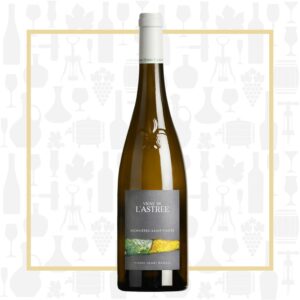Cellar Profile
Nestled along the Sèvre River, in the Nantes region of the Loire Valley, sits the village of Saint-Fiacre. This is Muscadet country and home to owner/winemaker Pierre-Henri Gadais’ exciting new winery, Domaine de la Combe. Gadais is one of the talented and driven new winemakers that is working hard to bring this storied region back to its former glory. The vineyard sits on the southern slopes of a valley carved out of metamorphic rock, with pebbly soil on top of layers of schist. The excellent drainage and steep slopes ensure that, despite the periodic heavy rainfalls in the region, the vines are forced to dig deep into the rocky soil to get water. Grapes are organically and sustainably grown and the estate was certified in organic agriculture in 2021. Gadais believes in minimal intervention in the cellar, utilizing indigenous yeasts and chill stabilizing to avoid malolactic fermentation. He also believes Melon de Bourgogne – the only grape variety he grows – should spend some time sitting on its lees and eschews new oak or barriques. Wines are produced in tiny lots and are some of the most complex Muscadet from the region.
Region
Muscadet is located in the Nantais region of the Loire Valley. Bordered by the foothills of the Mauges and Bocage Verdeen ranges, vineyards are frequently planted on the steep hillsides of the Sèvre and Maine Rivers. Sitting on the Massif Armoricain, soils are primarily gneiss, schist and granite. There are crushed seashells and sand pockets leftover from retreating oceanic waters in many of the vineyards. Melon de Bourgogne, a white grape, is the only variety allowed in appellation status bottlings. The wines are typically light- to medium bodied, with vibrant acidity.
Vineyard
Part of the Cru Monnières-Saint-Fiacre (the equivalent to a Villages designation in Burgundy), this incredibly steep, south-facing vineyard is 70% gneiss and 30% mica-laced schist. A tiny, one hectare plot is densely planted to stress the vines, to extract the most complexity possible from the vineyard. These are extremely old vines, some of the oldest in all of Muscadet.
Varieties
Melon de Bourgogne is a crossing between Pinot Blanc and the little known Gouais Blanc. It was once prevalent in the vineyards of Burgundy (hence its name), until it was ordered to be destroyed by the Burgundians in the 18th century. By then, it had a toehold in the Atlantic area of the Loire Valley around Nantes, where it became the dominant variety and the base variety of Muscadet. Typically high in acid, fresh and mineral-driven, it typically does not take to new oak very well. Complexity is gained by spending time on its lees. The best examples gain stone fruit notes to go along with the characteristic citrus elements.
Winemaking
Hand-harvested at peak maturity during the evening to ensure the spontaneous fermentation has ambient temperature controls. Yields are only half of what the already stringent appellation rules allow. The grapes are pressed immediately and gravity fed into large used oak for a 3 week fermentation, then 26 months of lees aging. During the early part of the process, there is regular batônnage, then after a couple of months, the wine is left alone until bottling.
Tasting Notes
Rich and textured for a Muscadet. There is a touch of apricot and peach on the nose. The typistic citrus elements are there as well, with a whiff of gun smoke. Ripe green apple, lemon-lime and a hint of peach are framed by fresh acidity and biscuity, autolytic notes. This is a fabulous contemplation wine with plenty of complexity. It would also pair wonderfully with grilled sea bass.

 info@buyersandcellars.ca
www.buyersandcellars.ca
info@buyersandcellars.ca
www.buyersandcellars.ca